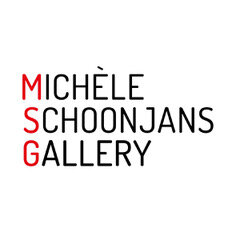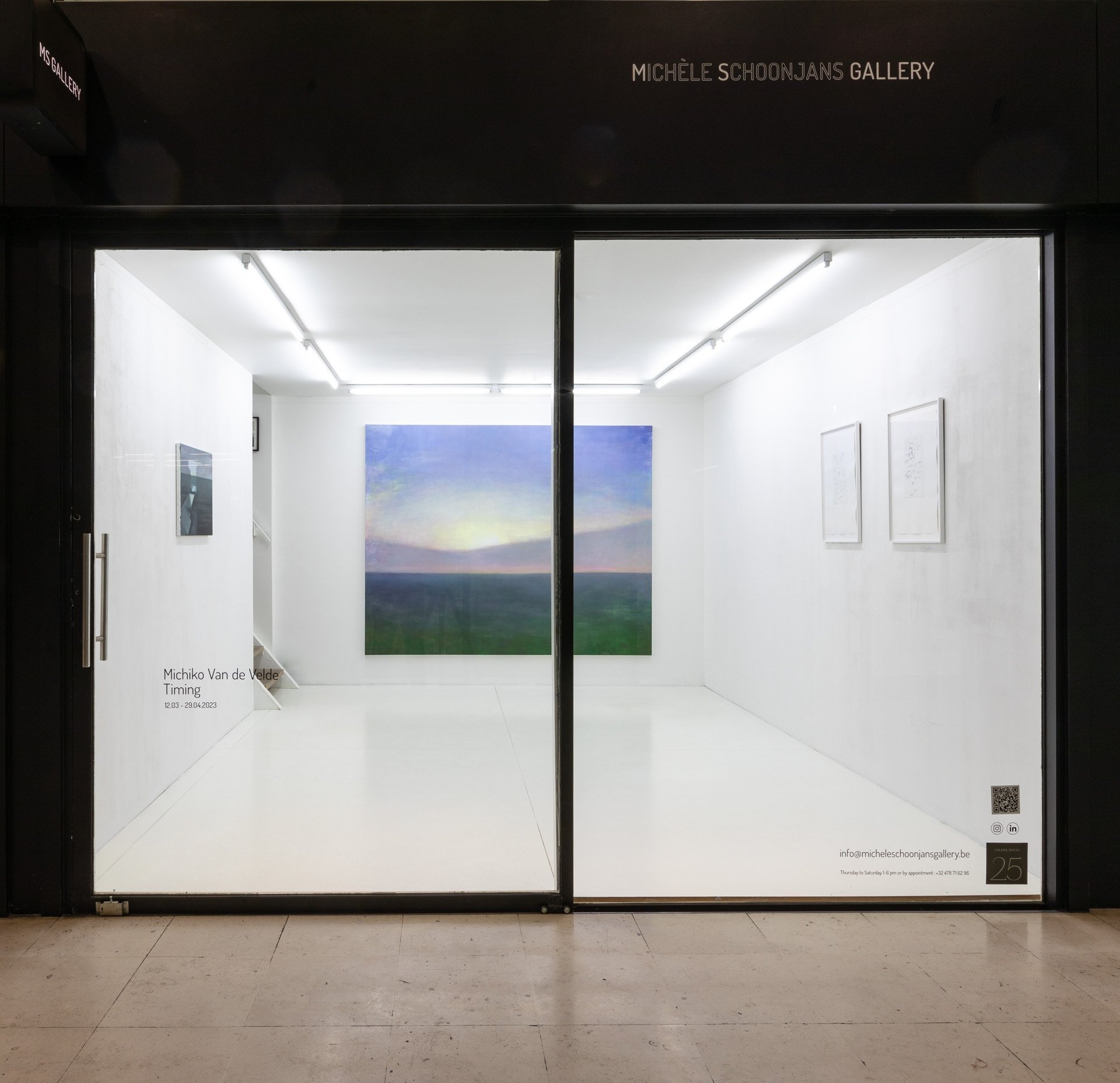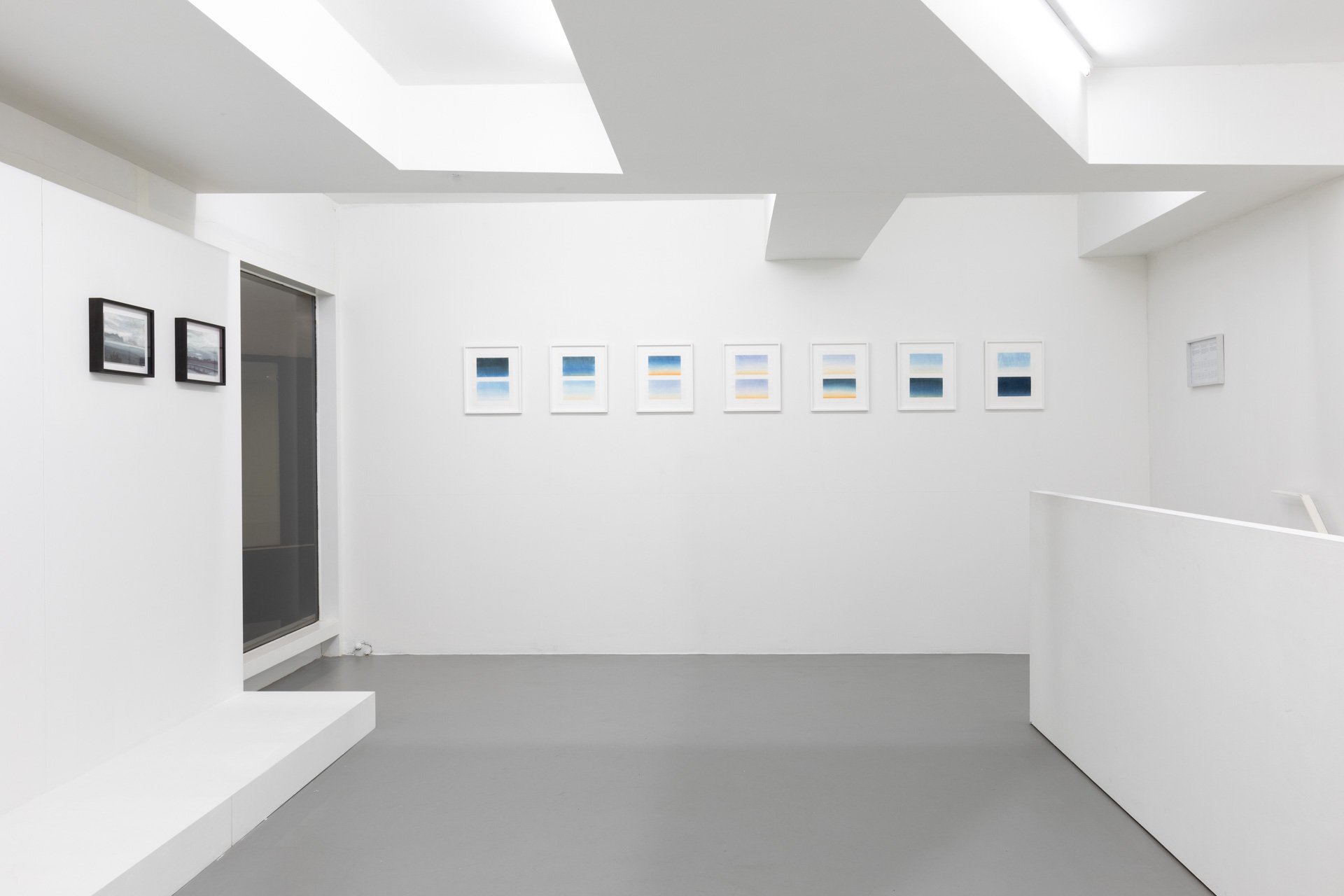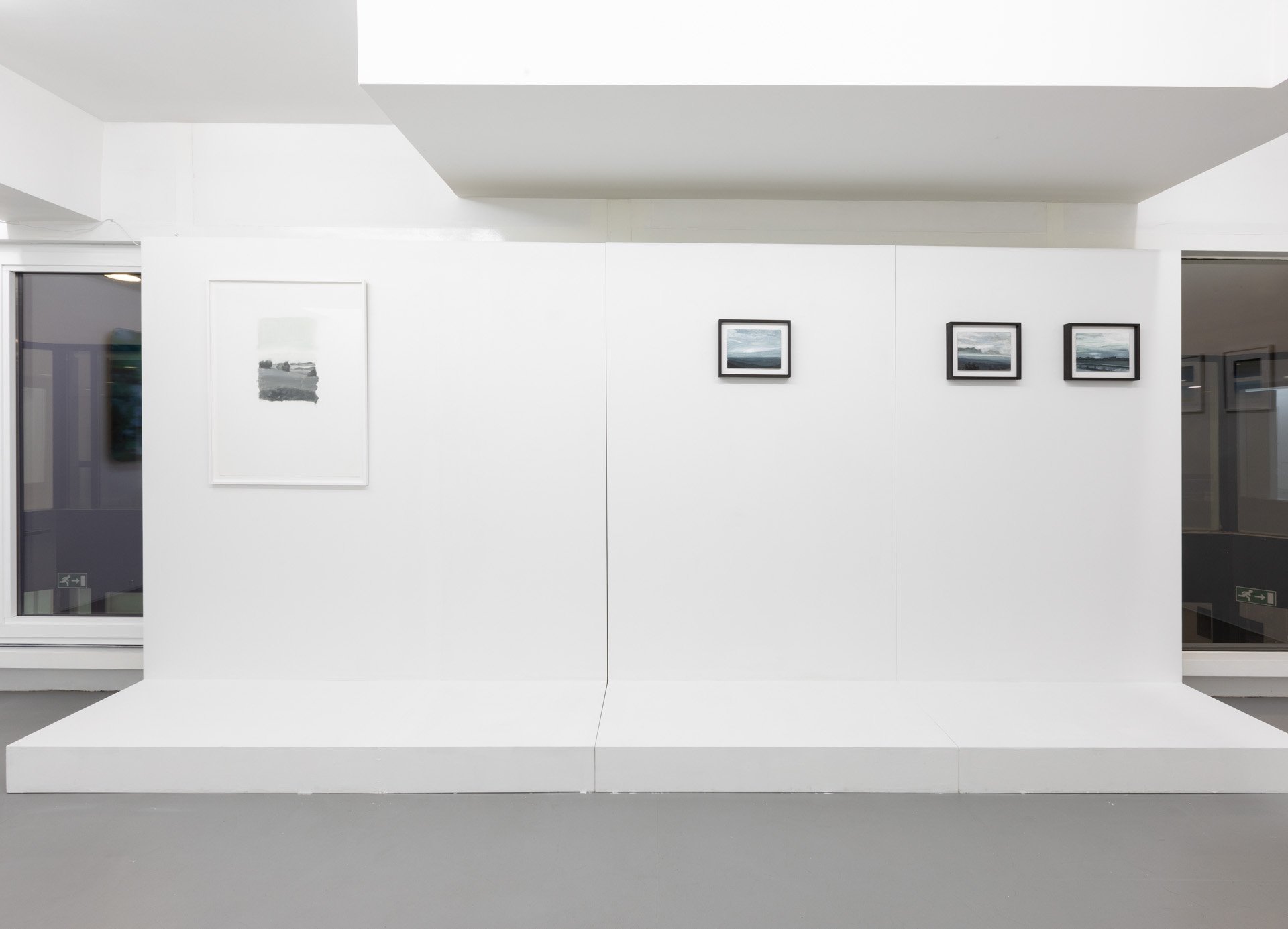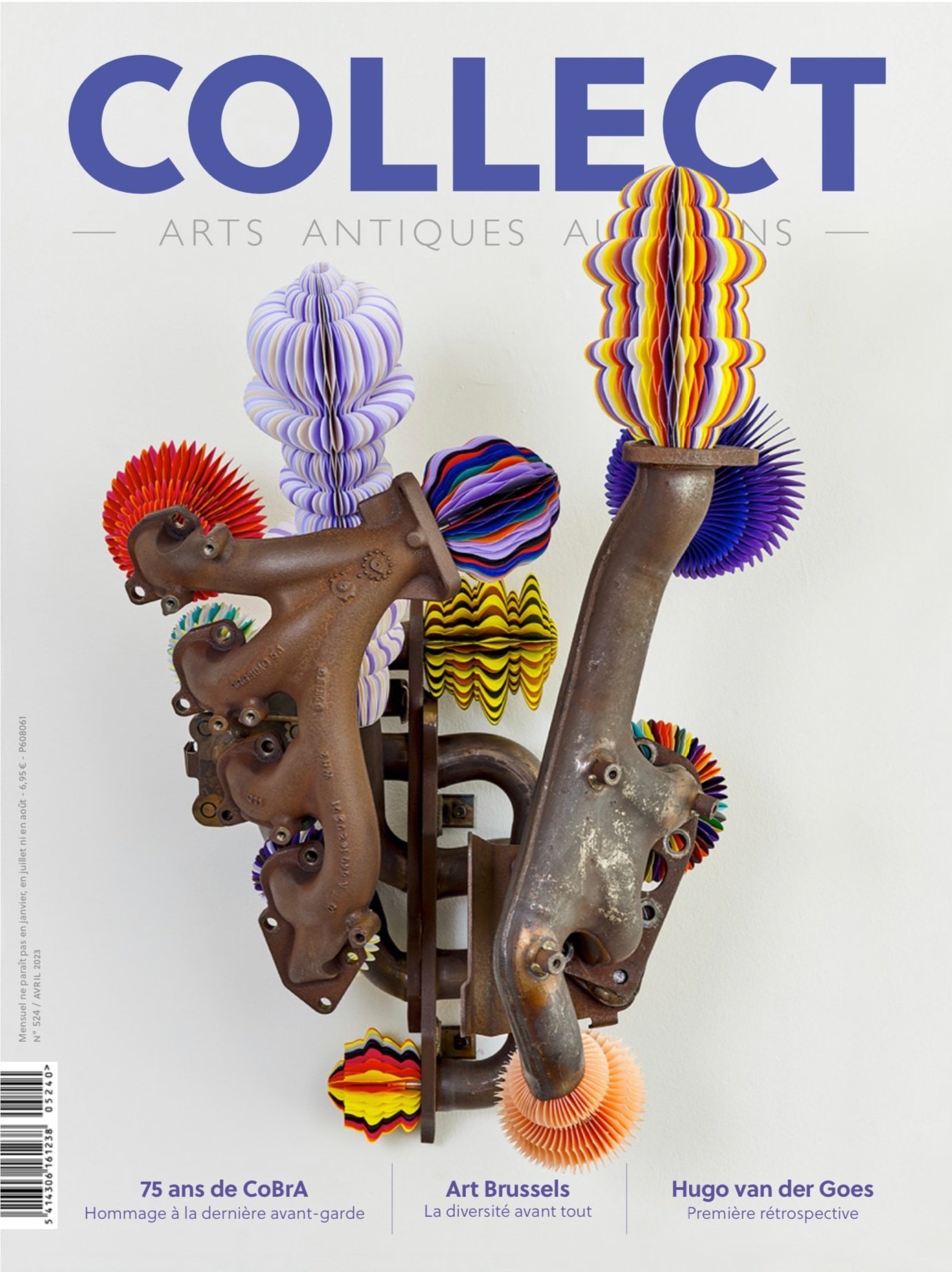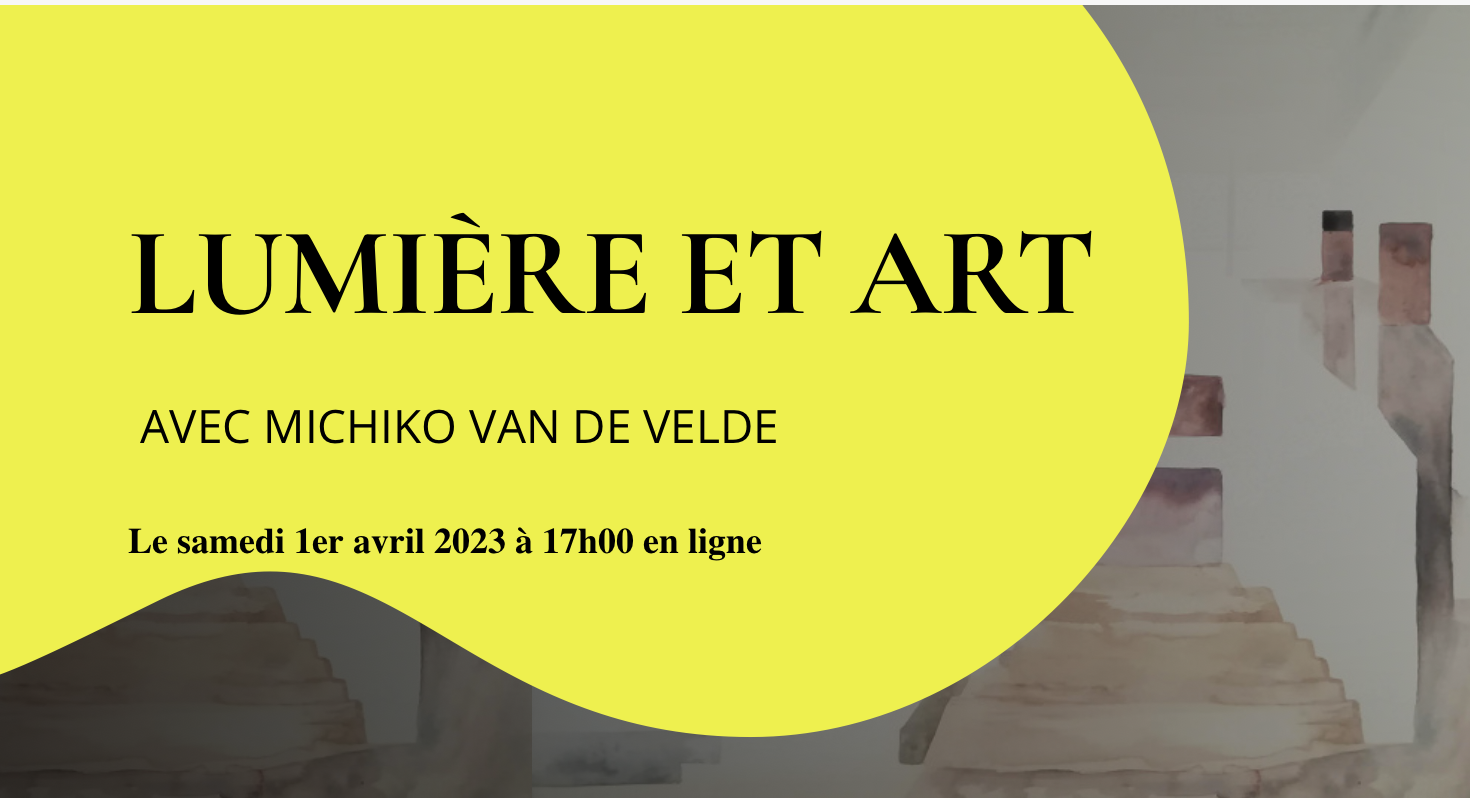Untitled - 2022 - Oil on canvas - 200 x 250 cm
“Comment parle-t-on de la lumière (au Japon)?”
“Quelle lumière? Celle de quand?”
(an extract from the book “ Lumières 光 “ , self-publishing, 2017)
Light?
Space?
Time?
What are we talking about while observing Michiko Van de Velde's work?
And in what language should we speak?
In 2017, she created “Lumières”, a booklet in which she collected dozens of Japanese words referencing the different aspects of light, like for example:
採光[saikō] Letting the outside light into your home.
薄日[usubi] Weak, soft, faint light, like a grey shroud or Brussels skies.
九十春光 [kujunō shunkō] Peaceful spring light that lasts 90 days, from March to June.
月白[tsuki shiro] As the moon ri ses, the eastern sky becomes brighter, whiter.
木漏れ日[komorebi] Sunlight filters through the trees: a play of light in the leaves.
At the end of this little phenomenology of light, she added another Japanese word: 間 [ma]. Ma is both space and time. It basically means interval, a distance or a period of time. In other words, a relationship. Daughter of a Japanese mother and a Belgian father, Michiko incarnates, so to speak間 [ma]. She lives 'between' two cultures, between two spaces and times.
However, without going too deep into psychology, Michiko seems to want to capture the awareness of this plurality of time and space, and especially the elusiveness of time, in images. For her, the fleeting time and space is visible and tangible in the permanently changing light.
In a number of works, she focuses on the simultaneity of the sunlight in Tokyo and Brussels. They are typically very different, but surprisingly, the sunrise in Brussels and sunset in Tokyo coincide twice a year. Other work often revolves around 'catching the light' and the moment when a sighting disappears again in a flash.
Michiko Van de Velde uses a variety of techniques.
She draws what she sees: light spots with pencil on paper or directly engraving onto metal plates.
In situ, she draws, paints, or 'scatters' reflective natural mica flakes to 'catch’ momentary sunlight.
She paints photographed views from moving trains, including the play of light reflections within the windows.
With moving images, she captured the colourful fog veils lit by an advertising billboard in the Brussels city center. She also "documented" herself, when she used freehand to draw circular spots of sunlight falling through the foliage of a tree (木漏れ日[komorebi]). In that moving image, you might notice how quickly the earth is spinning by looking at the movement of the sunlight spots sliding on the paper. The shadows move so quickly that it is almost impossible to draw the whole circular sunlight shape: the beginning and ending of this drawing aren’t in the same place.
That "fleeting" light and the volatility of things comes together in the word 木漏れ日[komorebi] where
the kanji 漏[mo] refers, among other things, to a leak as well as flight/escape. Perhaps we should look at Michiko Van de Velde's work as a reappropriation of 'Kunst der Fuge'. As in the in musical fugues by J.S. Bach, she transforms the volatility and elusiveness of time into the art of living.
Koen Van Synghel, Brussels, 27 January 2023
